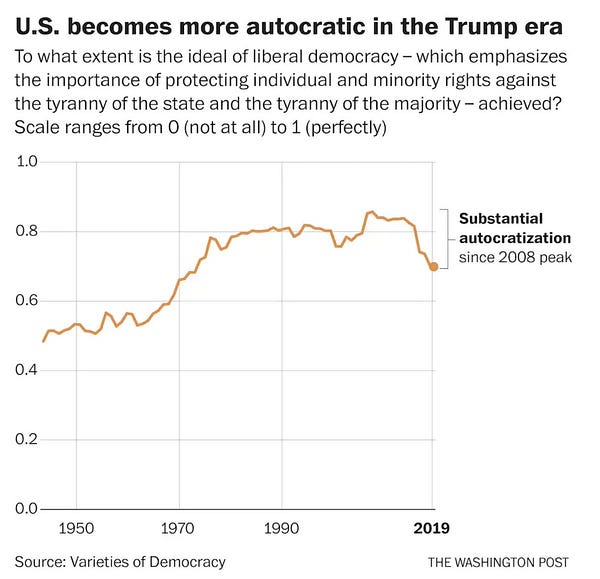Why I left the Washington Post
Let's make data fun again
My last day as a Washington Post reporter was June 1. It’s a place I still love and I had seven great years there — most of them writing for Wonkblog, the Post’s policy/data/chart blog, which shuttered in 2018. But by 2021, having spent the past year hunkered down at home, trying to help manage three unruly kids while fretting over the dual existential threats of the pandemic and an attempted authoritarian takeover of the government, I was exhausted. It was time for a change.
I wanted to get back to my roots, to doing the kind of stuff the Post had hired me for in the first place — daily, visual explorations of unusual data that helps you look at the world in a different light. One thing that about data that’s often overlooked, but which Wonkblog captured very well: data can be fun! While I was there I had a mandate to quantify interesting and offbeat things like the amount of frosting on leading shredded wheat brands, or the most calorie-efficient way to get hammered, or the ugliest places in the U.S., or the shittiest celebrity pitches at major league baseball games.


Of course, you can do more serious stuff with data, too — dig up policy solutions for certain social problems, or indicate who to blame for certain social ills, or suggest, say, that one of the two major American political parties is on the fast track to authoritarian fascism.


One thing those two types of data — the fun stuff and the serious stuff — have in common: they don’t really fit nicely into a traditional journalism model. For a while, at the Post, they had a home in Wonkblog. But without that freewheeling, bloggy context it can be hard to do that kind of work in a newsroom. The fun stuff tends to be as far from the daily news cycle as you can get, and the serious stuff can be a challenge to do well due to the longstanding view-from-nowhere, ‘both sides’ biases at work in traditional news coverage.
That’s why I came here, to Substack: because fitting my brain into the context of mainstream journalism increasingly felt like a square peg/round hole problem.


Substance aside, one of the things I miss about the heyday of the newsblog era is the ability to talk and think out loud, to explore a topic knowing that I won’t get all the answers, to have the freedom to be wrong about something in public and change my mind about it. I hope to recapture some of that here.
I don’t want to have to hide from my readers how I think about a topic, for fear that some idiot online is going to twist it into a narrative of Bias At The Post (frankly, I’m sure my former editors are relieved to be free of this burden too). I feel like I owe it to you guys to be up front and honest about where I’m coming from, even in cases where the place I’m coming from turns out to be “gee I wonder why Ryder hardly ever calls on Zuma in Paw Patrol.”


So that’s what I’m trying to anchor this newsletter in: honesty, curiosity, and the perspective of a lifelong generalist who still clings to the corny belief that good data can help us understand the world around us. I hope most of what I do here will be fun. I hope some of it will alarm you. And I hope all of it will help you learn something unexpected.



This is great!! Can’t wait!!
What a wonderful opportunity for a data hunter! Looking forward to it.